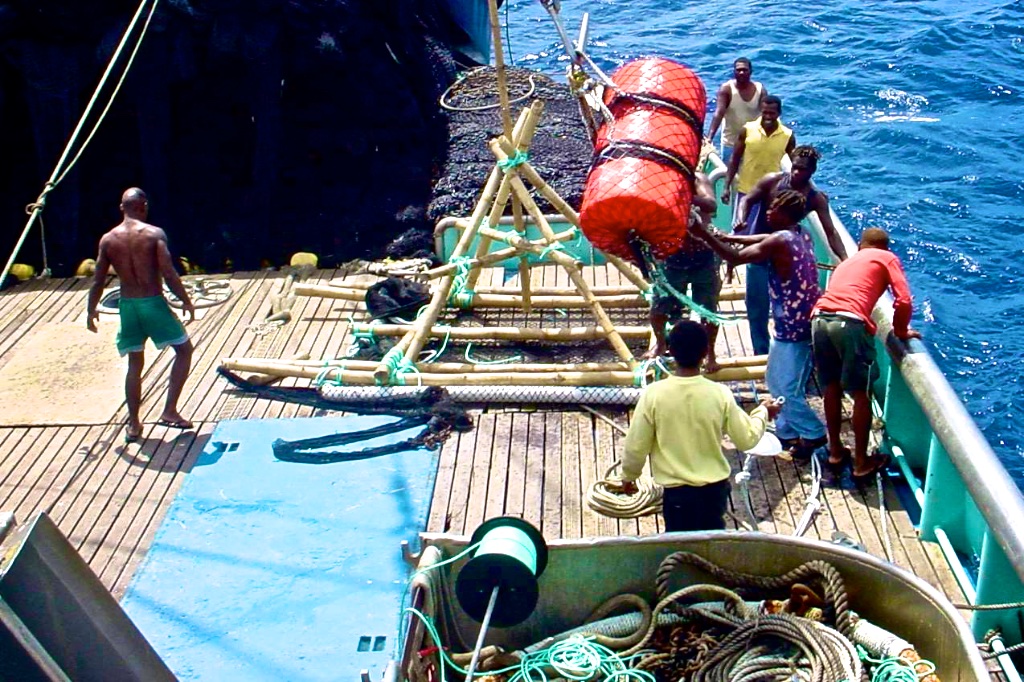Today's is not strictly a fisheries post... but is about one of my favourite sea creatures: Octopus While I love to eat them, I'll have to admit that the more I know about them, the harder it gets... Particularly for anthropomorphic reasons, I like people and things that are our of the ordinary... and octopuses are real awesome freaks!
Where else would you find an intelligent organism that has a hydraulic skeleton, grab stuff with suckers out of its 8 arms, has the capacity to change the colour and texture of their skin, moves by jet propulsion, and spits ink when they are upset... common!
The Economist publish recently the results of an interesting paper on some genetical aspects of their intelligence, I quote it below
Almost all intelligent creatures, be they parrots, sharks or human beings, are vertebrates. This is inconvenient for anyone trying to understand the nature of intelligence because it means, by and large, that he can study only how it has developed down a single evolutionary path. But there is an important exception. Molluscs branched off to form their own lineage before any organism had a spine—and one particular class of them, the cephalopods, has since become smart enough to rival some vertebrates.
Modern cephalopods are octopuses, squid, cuttlefish and an unusual shelled creature called the nautilus. Octopuses, in particular, are rated as intelligent. Some carry coconut shells across the seabed to make shelters. Others have worked out that fishing boats offer easy pickings. There have even been cases of them climbing out of aquarium tanks to raid a neighbouring tank that contained a tasty morsel. Many researchers would like to know whether these behaviours have come about in a different way from vertebrate intelligence, or if there are common traits that are necessary for smart creatures of any sort.
Caroline Albertin, of the University of Chicago, and her colleagues have been trying to understand the basis of cephalopod intelligence. To do so, as they report this week in Nature, they have mapped the genome of an octopus species called the California two-spot. They wanted to see which sets of genes in this species were pronounced in comparison to those in other, simpler, molluscs. They found two genetic families that were indeed greatly expanded. One of these, known as C2H2, encodes proteins called transcription factors, which regulate the activities of other genes. The second is the protocadherins, which encode proteins that guide the development of neurons in the nervous system. Both of these gene families are also expanded in vertebrates—but not, as far as is known, in any other group of animals.
Ms Albertin’s co-author, Daniel Rokhsar, of the Okinawa Institute of Science and Technology, in Japan, describes protocadherins as molecular barcodes that identify a cell to its neighbours, enabling appropriate connections to be made. This is vital when building a nervous system. Such a system’s essence is the correct connection between its neurons. Expanding the number of genes for these proteins means they can exist in more diverse forms. In vertebrates this makes it possible for nerve cells to form more complex circuits, and the same is probably true in octopuses.
The effects of the C2H2 genes are less well understood, but having more of them presumably lets octopus genes function in more diverse ways than those of simpler creatures. That would allow a more sophisticated nervous system to develop.
Certainly, the octopus nervous system is sophisticated. It is also different from that of vertebrates, the neurons of which are concentrated in the brain and spinal cord, whence protuberances called axons travel to the rest of the body, to tell it what to do. An octopus brain holds only a third of the animal’s neurons and, being an invertebrate, an octopus by definition has no spinal cord. Instead, the balance of its neurons are concentrated in its arms, which therefore have a curious sort of independence.
This arrangement seems to have come into existence after the split, 270m years ago, that separated octopuses from other cephalopods. The arms of squid and cuttlefish remain under the control of the brain. Each octopus tentacle, however, acts autonomously as it feels around for food or threats. The brain can take over if necessary, but their decentralised nervous systems make octopuses less dependent than vertebrates on transmitting long-range signals through their bodies. That means they can act quickly and instinctively, though at a cost: they can exercise precise control of their arms only by looking directly at them.
With around half a billion neurons, a California two-spot can probably out-think a rat, which has only 200m of them. Yet the decentralisation of its nervous system means the nature of that thinking is surely alien to the vertebrate approach. This, alone, shows intelligence can develop in more than one way. Pursuing Ms Albertin’s approach may help researchers to get their arms around the details.
Original story here






































